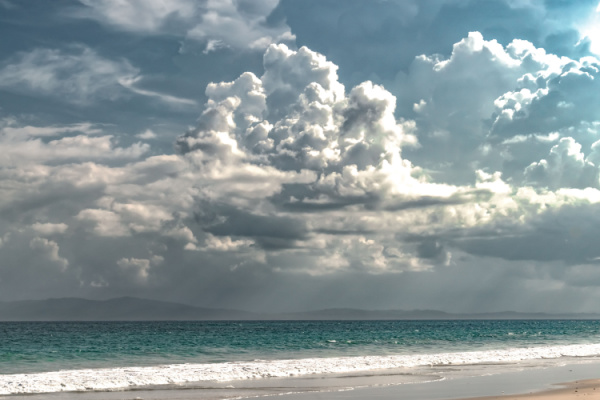Despite a midsummer lull over the Atlantic basin, AccuWeather meteorologists are monitoring a couple of tropical disturbances that could develop in the coming days. Either system could strengthen into the fifth named tropical system of the 2023 hurricane season.
A series of tropical disturbances, often referred to as tropical waves, continues to move westward off the coast of Africa. These disturbances originate over the Indian Ocean and move westward across the African continent as clusters of thunderstorms, gusty winds and Saharan dust. When they emerge over the Atlantic Ocean, they can develop into an organized tropical system.
The tropical waves have been more vigorous than usual this season and helped spawn tropical storms Bret and Cindy in June. Since then, there have been some tropical waves that showed some promise for development for a time, such as the recent wave currently moving westward over the Caribbean. That wave began to ramp up as it approached Central America early Friday and unleashed locally heavy rainfall. The same system may develop soon after it moves into the Pacific basin.
The tropical waves have struggled with vast areas of dry air and disruptive breezes, called wind shear over the past month. These conditions are quite common during July over the prime development zone of the Atlantic that extends from the African coast to the Caribbean.
Occasionally, a window of opportunity opens up for one of these waves to enter a zone of moist air and low wind shear. This will be the case with a tropical wave during the final days of July and perhaps into the first few days of August. The feature was located about halfway between the coast of Africa and the Lesser Antilles in the Caribbean as of Friday.
AccuWeather meteorologists are predicting a medium chance for the wave to develop into a tropical depression or named tropical storm through the end of July as it took a west then northwest path over the weekend. “This feature is expected to pass to the northeast of the Leeward Islands in the Caribbean late this weekend and then curve northward into the western or central Atlantic,” AccuWeather Senior Meteorologist Adam Douty said.
The Leeward Islands are the northern group of islands in the eastern Caribbean. “While this feature does not appear to be a significant threat to the Caribbean or the U.S., it will need to be monitored for potential impacts to Bermuda,” Douty said.
A large southward dip in the jet stream will develop in the eastern U.S. next week and influence where the system may head next. “That jet stream dip will end a heat wave and usher in much cooler and less humid air to the Northeast and Midwest, as well as parts of the Southeast,” AccuWeather Chief On-Air Meteorologist Bernie Rayno said.
It is the west-to-southwest flow of air around the base of the jet stream dip that should keep any tropical system over the central Atlantic away from the U.S. this week, Rayno explained.
Should the tropical wave develop a circulation with sustained winds reaching 39 mph or greater, a tropical storm would be born. The next name on the list of tropical storms for the 2023 Atlantic hurricane season is Emily. A tropical depression, which is one step down from a tropical storm, is not quite as organized and has winds of 35-38 mph.
—
Photo Credit: Ashish_wassup6730 / Shutterstock.com
